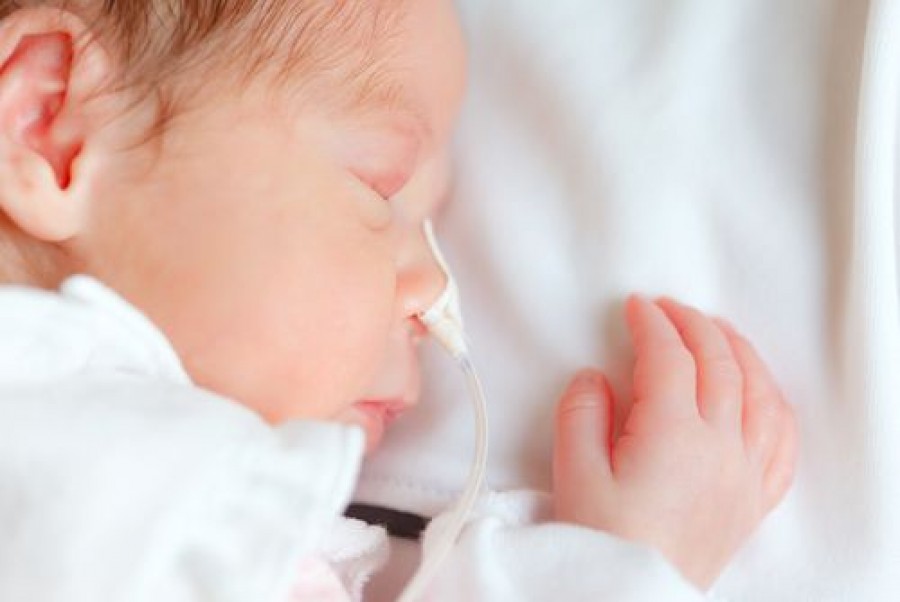Preventing Perineal Tears during Labour

The perineum is a region between the anus and the scrotum of a human body. In a woman, the perineum is the wall which separates the vagina from the anus. Perineum is not usually prone to infections but trauma has commonly occurred in young girls. Perineal tearing is even more commonly found in women during labour.
What is a perineal tear?
A perineal tear is the occurrence of a sudden laceration or cut on the perineum. It is commonly seen in women during labour due to continuous pushing of mother and rubbing of baby’s head against the perineum.
Types of Perineal tears
First degree tear
This is a superficial tear found on the skin of the perineum. It is splitting of the skin due to light rubbing of the skin against baby’s head or mother’s pushing.
Second degree tear
This tear extends deeper into the muscles of the perineum. This tear is most commonly seen during prolonged labour and needs stitching under local anesthesia.
Third degree tear
This tear extends up to the muscles and fascia of the perineum as well as the anal sphincter. This needs proper surgical management as it may lead to permanent fecal incontinence or painful urinating or bowel movements.
Fourth degree tear
This tear is the deepest and extends up to the rectal mucosa. This can be painful and grave condition where it needs management of tears under anesthesia and may lead to impairment of rectus.
Causes of perineal tearing
Any condition which causes injury to the perineum might lead to a tear. Some of the causes of a perineal tearing are mentioned below:
First vaginal delivery
The head of the fetus is larger than the birth canal at the time of delivery. Naturally, as the baby passes through the canal, the size of the head would cause some degree of trauma.
Previous history
If a woman has had a perineal tear previously, she is likely to suffer from a tear again in the future. This is due to weakening of the muscles because of continuous stretching during labour.
Assisted delivery
When a woman needs help with delivering her baby, often instruments such as a forceps, are used to assist her. Such instruments might cause an injury to the birth canal and thereby lead to a perineal tear.
Big size baby
Newborns that are bigger in size at birth compared to an average sized baby at birth make a vaginal delivery extremely difficult. Bigger sized newborns often cause the perineum quite a bit of damage during the delivery. Big babies are frequently born to diabetic mothers.
Prolonged labour
A pregnant woman who pushes hard and for long hours during labour is more prone to injury to the perineum due to the stress.
Signs & Symptoms of perineal tearing
Swelling
An injury of any kind to a part of the body including the perineum causes inflammation of that region. The classical signs of inflammation are heat, pain, redness, swelling and loss of function.
Pain
Rectal tearing can be very painful .It may cause everyday routine very difficult. The woman may face difficulty sitting down, pains while using the toilet and while urinating etc.
Bleeding
Recurrent stretching of perineal muscles while using bowels or improper sitting or trauma may cause bleeding from the perineal tear and result in extending the tear depth.
Haemotoma
Sometimes an injury might cause the collection of blood also known as a haemotoma, at that region. This can cause blood loss, weakness, tenderness
Management of Perineal Tearing
Stitches
The doctor numbs the tear by injecting an anesthetic into the affected area. The anesthetic helps relieve the pregnant woman of the pain and then surgically stitch the tear.
Stool softeners
Passing stools could be very painful so do use stool softeners for the next few weeks.
Fiber diet
Eat food which is high in fiber in order to prevent constipation as being constipated would only make the condition of the tear worse.
Intercourse
Avoid having intercourse until your doctor gives you the permission to do so. It could be very painful for the women and may cause bleeding.
How to prevent perineal tears
Pelvic floor exercises
Women should be encouraged to exercise to strengthening the pelvic floor. These exercises are Kegel exercises mostly done to prevent uterovaginal prolapsed. Its aim is to strengthen the pelvic floor muscles and increases flexibility during labour.
Changing positions during labour
It is seen that giving birth in lying on back position may result in more perineal tearing as it prevents gravity and needs harder push. If a women keeps changing positions such as squatting, sitting or hands and knees position may prevent tearing.
Episiotomy
Episiotomy is an intentional laceration over the vagina during labour to increase the vaginal opening promoting delivery of baby. It is not usually done on every pregnant woman but in complicated labour such as prolong labour, big baby, multiple gestations.
Perineal massage
Massaging the perineum can help relieve the labour pain and makes pushing easier for mother, preventing tears over the perineum.
Gentle stretching on vagina
Gently stretch on the vaginal opening with a sterilized or gloved index finger. Doing this helps make room for the newborn’s head. This process is usually done by the gynecologist.
You May Also Like
Most Viewed
-
5 Common Methods of Contraception
Last updated On by Percy Oad -
How to Cope with Male Infertility
Last updated On by Alina -
What is the Difference Between Primary and Secondary Infertility?
Last updated On by Madison -
How to start a child-free life after infertility
Last updated On by Jacinta







